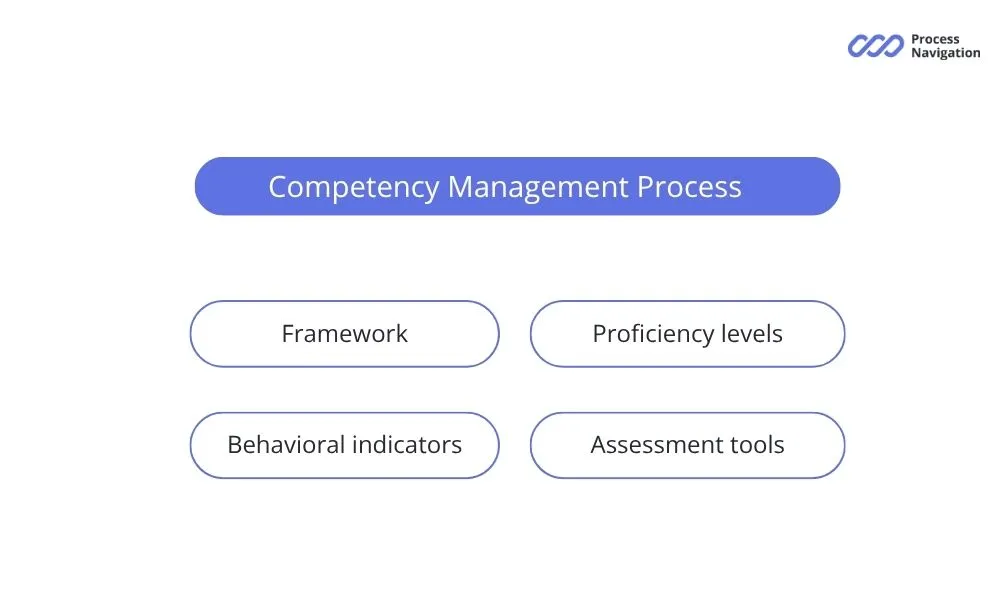Modern businesses face a big challenge: how do you ensure every employee has the skills to do their job? How do you identify high potential employees and grow them? How do you prepare the company for future challenges? The answer to all these questions is competency management. It’s becoming clear that competency management is key to organizational success in today’s competitive landscape.
Competency management is more than just an HR process. It’s a strategic tool that helps companies develop their people, improve productivity and achieve business goals. In this article we’ll explore what competency management is, how to implement it and which tools to use for maximum impact.
What is Competency Management?
Competency management is the process of identifying, tracking and optimizing the skills, knowledge and behaviors that employees need to perform their roles effectively. It involves aligning individual specific competencies with the organization’s objectives so that staff are prepared to meet current and future needs. Competency management aligns individual competencies with business objectives so employees have the skills needed to meet organizational goals.
Competencies can be defined as the combination of skills, knowledge, attitudes and behaviors that enable an individual to perform a task or role successfully. When employees understand the competencies required for their role, engagement and performance typically improves significantly.
Competency management (often used interchangeably) focuses on:
- Determining the skills needed for each role
- Assessing the current level of employees’ current skills
- Identifying gaps between the required and actual levels
- Developing plans to close these gaps.
Effective competency management requires alignment between individual capabilities and organizational needs. Senior leaders must champion this approach so hr team resources are properly allocated.
Key Components of Competency Management Process
Competency model frameworks define the skills and behaviors for each job role in the organization. Understanding what each job means in terms of competency requirements is essential.

Competency management process involves several interconnected components:
| Component | Description | Competency framework |
| Competency framework | A structured competency framework outlining expected behavior and proficiency levels | A unified standard for evaluating and developing all employees |
| Behavioral indicators | Behavioral competencies – observable manifestations of competencies in work behavior | Objective assessment without subjective interpretations |
| Proficiency levels | Competency proficiency scale (usually 3-5 levels) | Defining development and career growth goals |
| Assessment tools | Assessment tools (tests, cases, 360-degree feedback) | Measuring the current level of competence |
How to Implement Competency Management System
Competency management can seem overwhelming but a systematic approach will make it easier. Here’s how:
- Define Organizational Goals: Start by understanding your organization’s strategic objectives. What are your short term and long term goals? Competency management should be linked to these goals so it’s relevant and effective. Strategic decisions about resource allocation must reflect competency priorities.
- Develop a Competency Framework: Developing a competency framework is key when creating a framework that’s tailored to your organization’s needs. Involve key stakeholders including HR, managers and employees to ensure the framework is comprehensive and practical.
- Assess Current Competencies: Tracking and validating employee work performance is critical to ensure regulatory compliance and operational safety. Assessing employees’ current skills ensures they meet the requirements of their role and align to organizational goals. Self assessments combined with manager evaluations and peer feedback provide a comprehensive view. Competency data from multiple sources reduces bias and increases accuracy.
- Development Plans: Based on the assessment results create plans for individuals and teams. Mix of learning methods to suit different learning styles.
- Technology: Use technology to simplify competency tracking and training delivery. HR software and LMS platforms can provide valuable data and insights to inform decisions.
- Monitor and Review: Competency management process is an ongoing cycle. Monitor progress, update the competency model as needed and review development initiatives. Competency data should be regularly analyzed to identify organizational trends and emerging skill gaps. Employees understand their progress better when they receive regular feedback tied to competency development.
Measuring the Effectiveness of Competency Management
| Key metrics | What does it measure | Target value |
| Competency gap closure rate | % of closed competency gaps over the period | 60-70% per year |
| Time to competency | The time it takes for new employees to reach the required level | -20% compared to baseline |
| Internal Mobility Rate | % of employees who moved to new roles within the company | 15-20% per year |
| Succession bench strength | Number of ready successors for critical positions | 2-3 candidates per position |
| Performance improvement | Increase in performance review ratings after competency development | +15-25% |
| Learning ROI | Return on investment in training | 3:1 or higher |

Benefits
Competency management benefits organizations, employees and customers. Here are the top ones:
- Better Performance: Matching employee skills to job requirements means organizations get the best out of their workforce. Employees will perform better in their role and be more productive.
- Employee Engagement: Competency management helps employees know their strengths and areas for development. Clear development paths and opportunities to upskill means employees have purpose and motivation.
- Succession Planning: With a clear view of the skills required for key roles, organizations can identify and prepare future leaders. No more surprises when a role becomes vacant and no disruption to business.
- Organisational Agility: Competency management allows organizations to respond to changing market demands by quickly identifying and filling skill gaps. Especially important in fast changing industries.
- Recruitment and Retention: By defining the competencies for each role, organizations can simplify their recruitment process and select the best candidate. And offer clear development opportunities to improve employee retention.
Challenges
While the benefits are clear, there are issues:
- Resistance to Change: Employees and managers may not want to change processes or systems. Hr team must communicate benefits clearly and involve stakeholders in implementation.
- Time and Resource: Building and implementing competency management process takes time and resource. Organizations must commit adequate budget and personnel for success.
- Measuring Complexity: Measuring competencies, especially soft skills, is subjective and difficult.Clear behavioral indicators help reduce subjectivity.
- Keeping Frameworks Relevant: As industries change, competency model frameworks need to be updated to reflect new skills and knowledge. This requires ongoing attention from senior leaders and the hr team.
To overcome these issues you need strong leadership, clear communication and a commitment to continuous improvement.
Competency Management Technologies
Modern competency management systems include:
- HRIS/HCM functionality:
- Store employee competency profiles
- Automated competency gap analysis
- Integration with performance review
- Tracking individual development plans
- AI and Machine Learning:
- Automatic learning path suggestion
- Prediction of future skills gaps
- Skills inference (identification of hidden skills by project)
- Intelligent recruitment for internal vacancies
- Learning Experience Platforms:
- Course recommendations based on competency gaps
- Micro-learning for quickly closing gaps
- Development progress tracking
Conclusion
Competency management is more than an HR project; it’s a strategic way to build a capable and agile workforce. For organizations that invest time and effort, competency management brings huge benefits. From better performance and engagement to better agility and succession planning the benefits touch every level of the business. By focusing on the skills and knowledge needed to achieve business goals competency management will help your business succeed in a fast changing and competitive world.
FAQ
Performance management focuses on performance evaluation—what the employee has accomplished (goals, KPIs, projects). Competency management focuses on how the employee performs—what skills, knowledge and behavior they demonstrate. The ideal system combines both approaches: performance management shows whether the individual has achieved their goals, while competency management explains why they have or have not achieved them and what needs to be developed. For example two managers may achieve identical business results, but one achieves them through micromanagement (which doesn’t scale), while the other achieves them through team development. Competency management highlights this difference.
Absolutely yes, and often it’s even easier! Small businesses don’t need a complex system — start with a simple capability model for 5-7 key competencies. Use simple tools: excel for tracking, regular one-on-one meetings for development discussions, peer feedback instead of formal 360-degree feedback. Small businesses reap the benefits faster: it’s easier to coordinate changes, easier to adapt the approach and higher employee engagement. The key is not to try to copy corporate practices, but to adapt them to your scale and culture.
Competency assessments are optimally conducted every 6-12 months, synced with the performance review cycle. For rapidly growing or business-critical roles, assessments can be conducted more frequently—quarterly. The competency framework itself should be reviewed every 1-2 years or whenever there are significant strategic changes. Behavioral indicators can be updated more frequently, based on feedback on their applicability. In rapidly changing industries (IT, digital), some technical competencies require annual updates. Important: don’t make assessment a goal in itself. If there’s no time for development and change between assessments, you’re assessing too frequently.
Managerial resistance is the biggest implementation killer. Strategies: show WIIFM (What’s In It For Me)—how competency management will make their job easier (easier decisions on hiring, development and promotion; less subjectivity). Involve them in developing the skills matrix—people support what they’ve created themselves. Start with pain points: “Are you struggling to assess candidates? Here’s how competencies can help.” Teach practical skills: how to give feedback based on behavioral indicators, how to create development plans. Find champions—managers who will lead by example. Share success stories. And most importantly—keep it simple! If a system requires three hours a week, it’s dead.
-
 Maintenance Plan: What Is It And How Does It Work
Maintenance Plan: What Is It And How Does It WorkIn modern manufacturing, equipment downtime costs businesses thousands of dollars an hour. The difference between...
Technology
-
 Competency Management
Competency ManagementModern businesses face a big challenge: how do you ensure every employee has the skills...
Technology
-
 Unlocking the Benefits of Total Quality Management
Unlocking the Benefits of Total Quality ManagementIn today’s competitive world, the quality of products and services is becoming the key to...
Technology